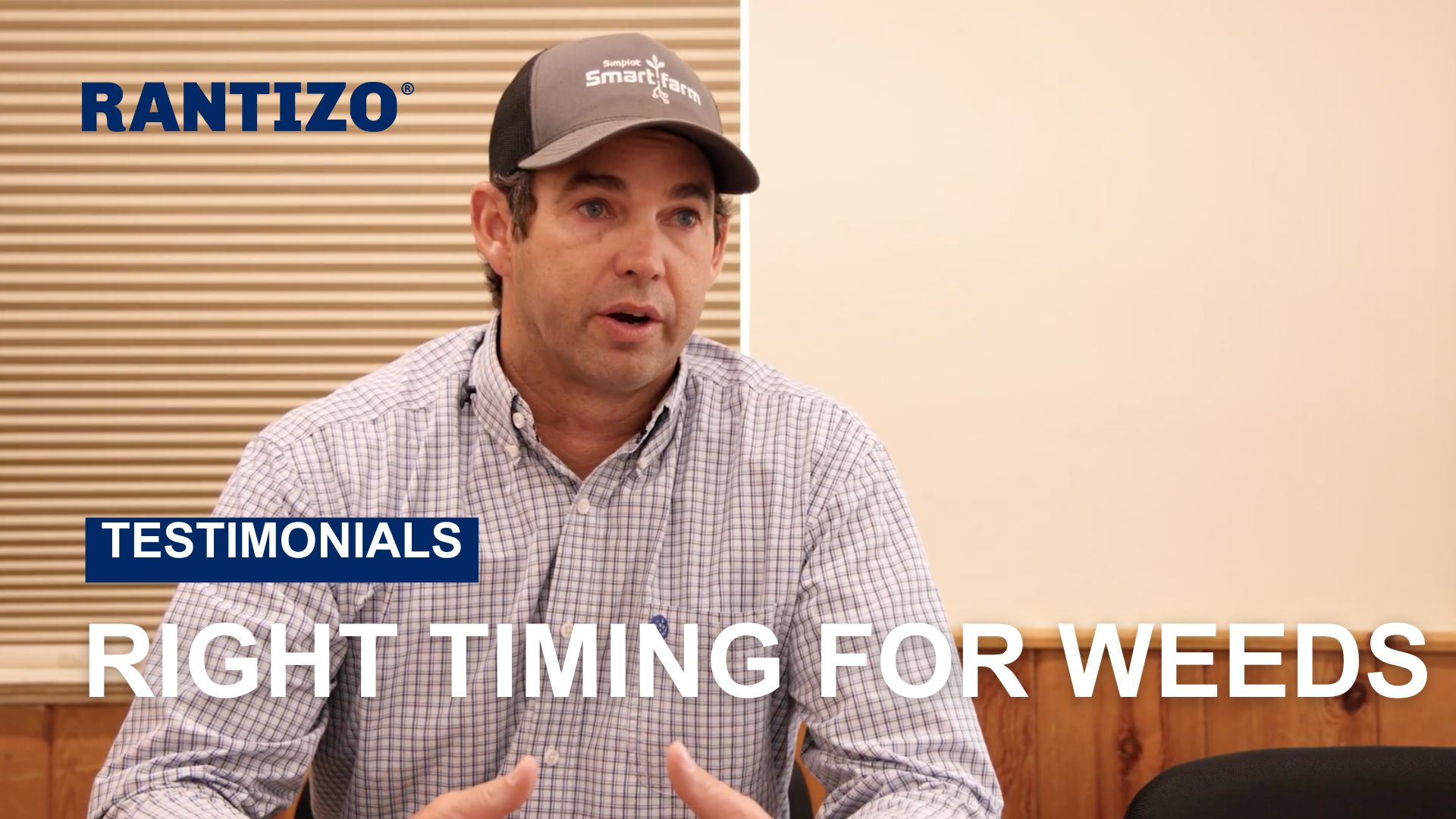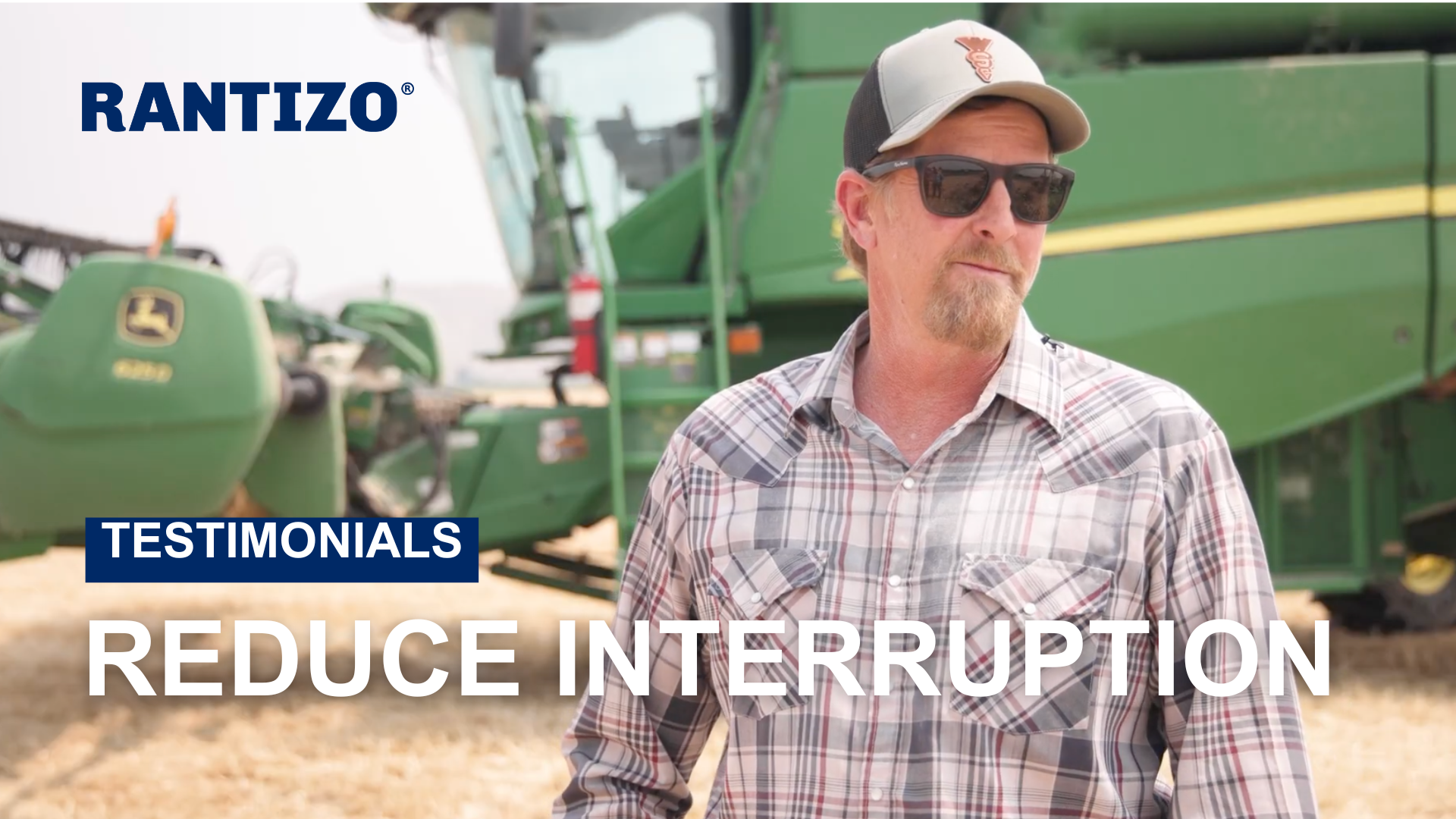RESOURCES
Application Drones Flying High
September 1, 2023
Application Drones Flying High
By Dan Jacobs
Senior Editor
Every so often, the industry takes an interest in a new technology. For the past few years, the ag community focused on biological products. While those products continue to be invested in and researched, there is another solution that could share some of that attention: Drones.
“The most impactful change has been their capacity,” said Arthur Erickson, CEO and Co-founder of Houston, Texas-based Hylio. “Spray drones just five to six years ago were limited to just two to three gallon payloads. Now the payload capacity is much greater.
Zach Hanner, Trial Manager with Iowa City, Iowa-based Rantizo
explains it’s not just capacity that has changed.
“Users enjoy better interfaces and improved accuracy,” Hanner said. “Due to the upgrades, prices have generally gone up, as well. Agricultural drones have also expanded beyond row-crop spraying. Rantizo has contracts using drones for invasive species removal, habitat restoration, pond and lake management, fly management on dairy operations, spraying weeds around solar panels and more.”
Despite drones becoming larger, more versatile, and more complex, they are also easier to use.
“Also of importance, the UAS have become much more reliable and autonomous,” Erickson said. “With the advancement of onboard sensors and control algorithms within the industry, the UAS can now be trusted to do taxing, complicated work that they would not have been able to handle even just a few years ago.”
“Hylio’s drones can now operate 10 or more hours a day with flights back-to-back with minimal downtime or component failure.”
They’re also doing things they’ve never done before.
“Drones are applying crop inputs with increased precision,” Hanner said. “Site-specific application through drone spraying allows crop inputs to go farther. Additionally, drones can fly for longer and are more sophisticated with variable rate technology.”
Application and Reformulation
The change drones have experienced parallels, and perhaps precipitated, a change to formulation.
According to Scott Tann, Business Manager North America, Agriculture Division, Lamberti, a global provider of agricultural crop inputs (and other chemistries), many of the products used with drones will need to be reformulated.
“This isn’t a new concept,” Tann said. “There is a history, a big push in the 1990s was to look at ULV (ultra-low volume) applications — such as chemigation applications and a lot of other low-volume spray applications. The concern at the time was water conservation. That resulted from going from 100 gallons in a spray tank down to today’s typical 10 gallons in a spray tank. We’re going to need to dust off a lot of the technology that we developed in the 1990s for ULV formulations to translate to drone technology, which means different solvents, surfactants and other formulants than we’re using today.
“It means different ways of thinking about surfactants, because there’s no water and oil interface that you’re going to see common in drone technology,” he continued. “It’s going to be very unusual, and you may actually see dry granular powders that will be dispersed as a granular in a drone because you won’t have the water to disperse the water dispersible granule.”
Giri Baleri, Director of Product Management and Strategic Marketing, Trimble, also expects that formulations will need to change to optimize applications for drones.
“Crop inputs, such as fertilizers and pesticides, may need to be reformulated or adjusted to account for environmental factors,” he said. “Soil conditions, climate, and weather patterns can influence the availability, mobility, and efficacy of inputs. Formulations may need to be tailored to specific environmental conditions to ensure optimal efficacy.
“Continuous research, development, and innovation in crop input formulations are essential to adapt to changing agricultural practices, address environmental concerns, and maximize efficacy,” Baleri continued. “Collaboration between crop input manufacturers, agronomists, researchers, and farmers can drive these advancements to address the specifics for drone supply, ensuring that crop inputs remain effective and sustainable in supporting crop growth and productivity.”
Seeing is Believing
Agricultural drone manufacturers are experiencing the heady rush of enthusiasm surrounding their products. The global agriculture drone market is projected to grow from $4.98 billion in 2023 to $18.22 billion by 2030, at a compound annual growth rate of 20.3% during the forecast period, according to Fortune Business Insights.
By 2024, the global commercial drone market (including non-ag) is expected to be worth USD$43.1 billion, according to research firm, Statista.com. Investments into drone technology are coming from both the public and private sectors.
A number of United Kingdom-based drone companies, including Hummingbird Technologies, Field Margin, Dendra Systems, and Drone AG raised more than a combined USD$22 million in the past few years.
The UAV market is also being supported by governments in a few different ways that include changing the rules to make it easier to implement drones and to invest in development. Earlier this year three U.S. senators introduced a bipartisan bill The Drone Infrastructure Inspection Grant that would authorize $100 in competitive grants for local governments. While not specifically targeting agriculture, the grants will help support the young industry.
According to Drone Industry Insights, 2021 saw nearly $7 billion from 199 investments deals, more than doubling 2020’s $2.4 billion. India instituted what it calls Production-Linked Incentive scheme, which could lead to more than 900 crore (nearly USD$10 billion) during the 2023/24 fiscal year, according to country’s Ministry of Civil Aviation.
“I believe we are in the ‘good ol’ days’ of drone application because the demand outweighs the supply,” said Hanner. “All of our contractors have a full book of business by year one which is incredible. I personally don’t believe that will last forever because as more producers recognize how drones can be a tool, more pilots will emerge. But right now, it’s pennies on the dollar for an investment compared to a ground rig. Folks are realizing these drones can be used across a wide range of cropping systems and scenarios.”
Those factors will continue to drive the UAS market forward Hanner believes.
“The biggest factor is simply time,” Hanner said. “With more years under our belt, folks will keep seeing that drone application is not only feasible but practical. More exposure to drones drives increased adoption. We have people stop on the side of the road and ask to take pictures when they see us using a drone, so we know seeing drones in action is the best way to advertise.”
Erickson agrees, “The market will become increasingly educated about the numerous advantages of drone applications as the years pass by; more drones out in the field equals more exposure to them and understanding of how beneficial they are. We are already starting to see a snowball effect where most of the farmers and applicators now seem to already be familiar with the general concepts of drone applications and are seeking to purchase one. Several years ago, we had to do a lot of educating and informing the market of even just the basics of crop treatment by drone.”
While the general public and consumer continue to observe and reap the benefits of drones, governments are starting to show support.
The Government of India is providing grants for drone purchasing and increasing support of drone manufacturers. The United States government is starting to get onboard as well.
“Rolling out of common-sense legislation that helps users operate crop treatment drones with less confusion, faster,” said Erickson. “Fortunately, we are already seeing the FAA trend in this direction with recent changes they have made over the last few months. The U.S. has been a bit behind in terms of rolling out streamlined laws and guidelines for the spray drone industry, which has hampered their adoption to a certain degree. Now that is improving, and we should see even more adoption.”
Adoption Around the World
While drones are growing in size and popularity, the adoption rate is not uniform around the world. Several factors impact how quickly that adoption takes place. Not surprisingly regulatory concerns, infrastructure, and financing are among the issues that impact regional markets.
For example, drones have been popular throughout North America.
“Large-scale farming operations in the U.S. and Canada, coupled with advanced technological infrastructure and favorable regulations, have seen widespread adoption of agricultural drones,” said Trimble’s Baleri.
Autonomy is another factor, he said.
“Several countries in Europe have embraced agricultural drones as well, including the United Kingdom, Germany, France, and the Netherlands,” Baleri continued. “In APAC, countries like China, Japan, Australia, and India have witnessed substantial adoption of agricultural drones. China, in particular, has a significant presence in the agricultural drone market, with its vast agricultural lands and a focus on modernization of farming practices. In the BRIC countries, drones enable small scale and subsistence farming to move to the next level of efficiency and sustainability. If there is a hindrance to growth, it’s the current regulatory environment, though it varies depending on the country, and the availability of pilots.”
It’s not just the wealthy, technologically advanced markets that have embraced drone applications. According to Erickson many markets in Africa are going from backpack sprayers directly to drones bypassing the large and relatively expensive machines used on farms with thousands of acres.
“Drones have been embraced in the U.S., but even more so in developing markets where agriculture is important, but infrastructure is somewhat poor,” he said. “Countries such as Brazil, Mexico, Colombia, and the Central American region all have a focus on agriculture economically and have financial and geographic challenges that makes UAS the ideal solution for their crop care needs.”
And the rest of the world will soon follow.
“There is an untapped market out there, but not for long,” Hanner said. “Across the state of Kansas, there are only three licensed entities that are able to fly and apply with drones, so there are plenty of acres to go around.
“The biggest hindrance is the licensing and certification process to do it legally,” he continued. “You have to have 107 pilots’ licenses, a state pesticide license, and be able to come up with revenue to buy and service the equipment, making the upfront cost another hindrance.”
What’s Next
“Rantizo believes drones aren’t out to replace traditional equipment,” Hanner said. “That’s not our goal. We want to be a tool in the toolbox and accommodate that acre that wasn’t going to be applied or sprayed otherwise. Do we want large amounts of acres? Yes. Do we want to battle that ground rig or plane for it? No. We want those acres that aren’t feasible and to be an additional resource for the producer as part of a normal routine and decision-making process during application season.”
Trimble’s Baleri also believes drones won’t completely replace traditional large machines. Instead, they’ll work in conjunction.
“Farm vehicles such as tractors, harvesters, etc., will increasingly be operated in an autonomous fashion, with autonomous drones collecting field information and feeding this data into an online platform for the extraction of critical agricultural intelligence,” Baleri said. “This situational intelligence will then be used to direct the autonomous farm vehicles accordingly. The technology for this already exists, as such it now becomes a matter of connecting and scaling these technologies to meet the needs of farmers and other stakeholders going forward.”
share this
past blog posts
Related blogs

The right timing of herbicide applications is crucial for crops’ growth stage. Camby Reynolds with Simplot Grower Solutions knows this well for his customers. With drone spraying, he’s able to find the best time for applications for weed management, maintain irrigation, all while maintaining the overall crop growth. Learn more about how he’s implemented spray drones with ground rigs and airplanes in the Bighorn Basin in Wyoming: https://www.rantizo.com/aerial-applications-integrating-spray-drones-and-airplanes-into-a-crop-protection-plan

Wyoming farmer John Busch knows firsthand the importance of maintaining irrigation efforts in the Bighorn Basin. Receiving less than 14 inches of rain per year, irrigation is critical. Spray drones have allowed him to spray his fields while keeping the water running. Read more about spraying on irrigated acres in our blog: https://www.rantizo.com/spray-drones-offer-unique-benefits-on-irrigated-acres



